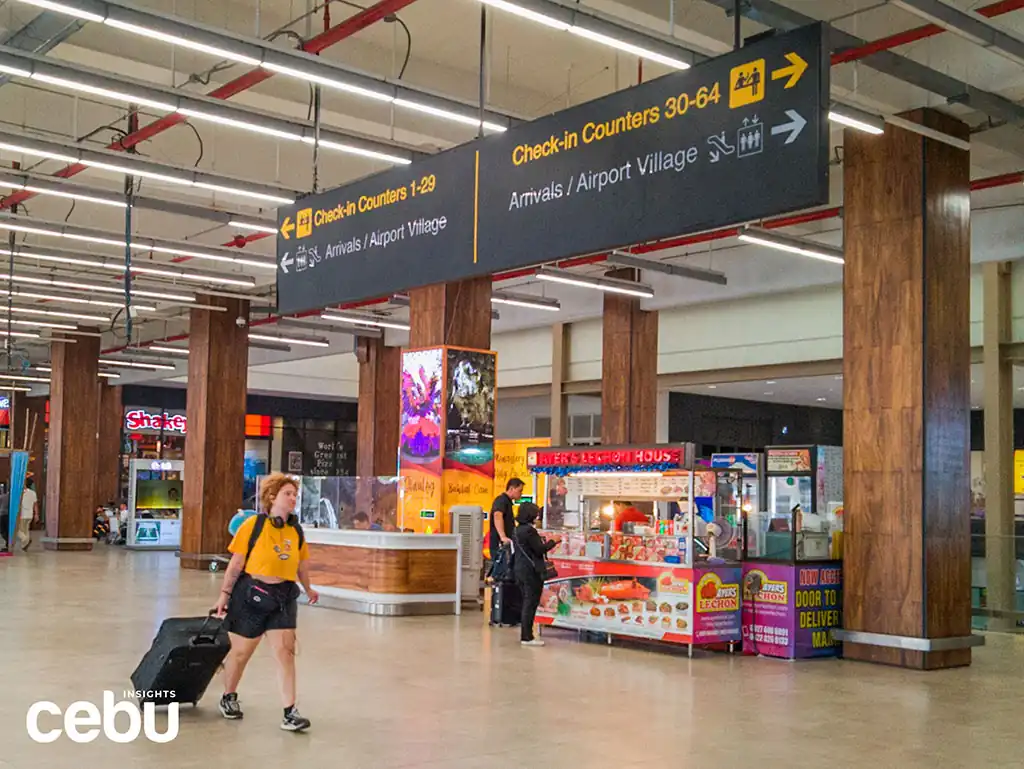The MCIA Redesign: Modernizing Cebu’s Local Airport
afacebu.gerard@gmail.com | Posted on |

The MCIA was named the best airport in Asia under the 5 million passenger category.
Many people believe that the airport serves as your first impression of a certain country. After all, it is the first and last place you’ll be when traveling.
The Philippines has its own airport that it’s proud of, and that’s the Mactan-Cebu International Airport (abbreviated as MCIA).
Not only is it notable for its world-class services, but also for its impressive architecture.
It is the second biggest and busiest airport in the Philippines after the Ninoy Aquino International Airport (NAIA) in Manila. Two of its terminals on Mactan Island can service 12.5 million domestic and international passengers (2021).
Previously, all flights came through the first terminal, which caused a large influx of passengers. A second structure was built in order to expand and decongest the airport.
The second terminal (sometimes called T2 or Terminal 2) is what makes this local airport an international hub. It is a feat of Filipino architecture, with renowned international designers at the helm.
DESIGNING TERMINAL TWO OF MCIA
The MCIA Terminal 2 garnered several awards from around the world.
The design team consists of the Hong Kong-based studio, Integrated Design Associates Ltd. (IDA), Filipino designers Budji+Royal Architecture+Design, and Cebuano interior designer Kenneth Cobonpue.
Subsequently, it is managed through a partnership between the GMR Group, an Indian company known for improving airports, and the Megawide Corporation who is famous for renovating downtown Cebu City landmarks like the Carbon Market.
The interiors of Mactan-Cebu International Airport Terminal 2 are inspired by Cebuano culture, using local materials to create a warm ambiance. Rather than using industrial materials like concrete and steel, the MCIA uses wood, handwoven counters, and handcrafted tiles (2020).
The most iconic design pieces are the massive arches, which are made from glued laminated (glulam) timber imported from Austria. The tall, wave-like structure references the island’s beaches and Catholic churches.
It is also the largest glulam timber structure in the world. The use of such material was lauded because of its low carbon footprint and easy assembly.
Terrazzo tiles fashioned with Mother of Pearl (the most popular shell chip used in terrazzo) are designed to look like sand, while the restrooms have doors made of long-lasting mahogany.
Terminal 2 has three floors, occupying 65,500 square meters. The departure area has four check-in halls, with 48 computerized counters, expandable to 72. The arrivals area also has seven passenger boarding bridges, expandable to 12.
All of the comfort rooms have moss walls made up of actual moss. Aside from giving you a relaxing vibe, these help reduce humidity and enhance air quality.
MCIA AWARDS
The Php17.5 billion terminal opened in July 2018, and months later, was recognized as the “Asia Pacific Medium Airport of the Year” at the CAPA 2018 Asia Aviation Awards for Excellence.
This award is given to airports with over 10 to 30 million annual passengers that have made significant innovations in the aviation industry.
The design was also recognized for its contributions to modern architecture in the Philippines, becoming the sole awardee in the Architecture and Allied Arts category of the 12th Ani ng Dangal (Harvest of Honors) Awards at the Malacañang in 2020.
In 2023, it was considered the best airport in Asia, in the Under 5 Million Passenger Category of the Routes Asia Awards.
The MCIA bested over 200 airports in the Asia Pacific region, including what many consider the world’s best airport, the Changi Airport in Singapore.
The Routes Asia Awards lauded the MCIA for its marketing, route development, innovation, and recovery strategies from the COVID-19 pandemic.
As soon as you get off the plane, the MCIA gives you a preview of what Cebu is like through its warm and homey architecture. It exudes the country’s culture in a modernized way to make arriving and waiting for your flight a bit more interesting and memorable.
The design itself is remarkable, re-imagined by a team that sees a bright future for the airport.
Passengers can explore the airport and the many restaurants, cafes, and designer stores while waiting for their flight. There is indeed a lot to admire about the MCIA.
A once simple local airport is now the gateway to the center of the Philippines.
REFERENCES:
Bueno, Feliz Grace. 2021. “4 Things About the Mactan-Cebu International Airport ―Country’s Second Largest Airport.” Pinoy Builders.
https://mail.pinoybuilders.ph/mactan-cebu-international-airport/
De la Cruz, Al Gerard. 2020. “The Philippines’ airports go from worst to best.” The PropertyGuru Asia Property Awards.
https://www.asiapropertyawards.com/en/mactan-cebu-international-airport-best-in-the-world-opens/




Leave a Reply